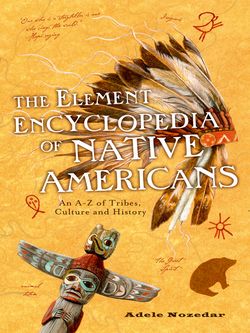Читать книгу The Element Encyclopedia of Native Americans: An A to Z of Tribes, Culture, and History - Adele Nozedar - Страница 15
THE THREE SISTERS
ОглавлениеThere were three crops that were fundamental to the Native American, and their cultivation was developed and refined by the invention of a method that was a superb example of what we call “sustainable farming” these days. The “Three Sisters” in question were corn, beans, and squash.
According to an Iroquois myth, these three plants were three sisters, also known as Deohako, who had been gifted to mankind by the Great Spirit. The Three Sisters thrive best in each other’s company, and another of their names reflects this: collectively they were referred to as “Our Sustainers.” The planting of the Three Sisters was accompanied by songs and ceremonies, the three seeds being planted together in the same mound of soil. Each of these plants not only supplies a healthy diet but, as the unused parts are plowed back in, adds nutrients to the soil. The first crop of green corn is still celebrated with festivals and dancing.
The symbiosis between the three plants has a wonderful logic. The corn—growing straight and strong—provides a “pole” of support for the bean plants to scramble up toward the sun. These beans have the additional benefit of helping to fix nitrogen into the soil, which further fertilizes the ground. The vines of the bean also strengthen the corn stalks, making them less liable to wind damage. Thirdly, the squash—which have shallow roots—not only act as a mulch, covering the ground and suppressing weeds, but also help keep the soil moist. Squash plants with spiny skins also help to deter any predators. At the end of the harvest, the debris of leaves and stalks left by all three plants would be dug back into the soil, enriching it even further.
As well as growing beautifully together, the nutritional value of the Three Sisters complement one another perfectly, too. The beans, when dried, not only provide protein but can be stored against the winter. The corn is starchy and full of carbohydrates, providing energy. The squash not only contains vitamins but its seeds yield a useful oil.
Native Americans invented this system with no knowledge of vitamins, nitrogen-fixing capabilities, or any of the technical information that we know of today. Further, the natural world, it was believed, offered up signs that the time had come either to plant the seeds or to harvest the crop. For example, the return of the Canada Geese signaled the time for planting the corn.
